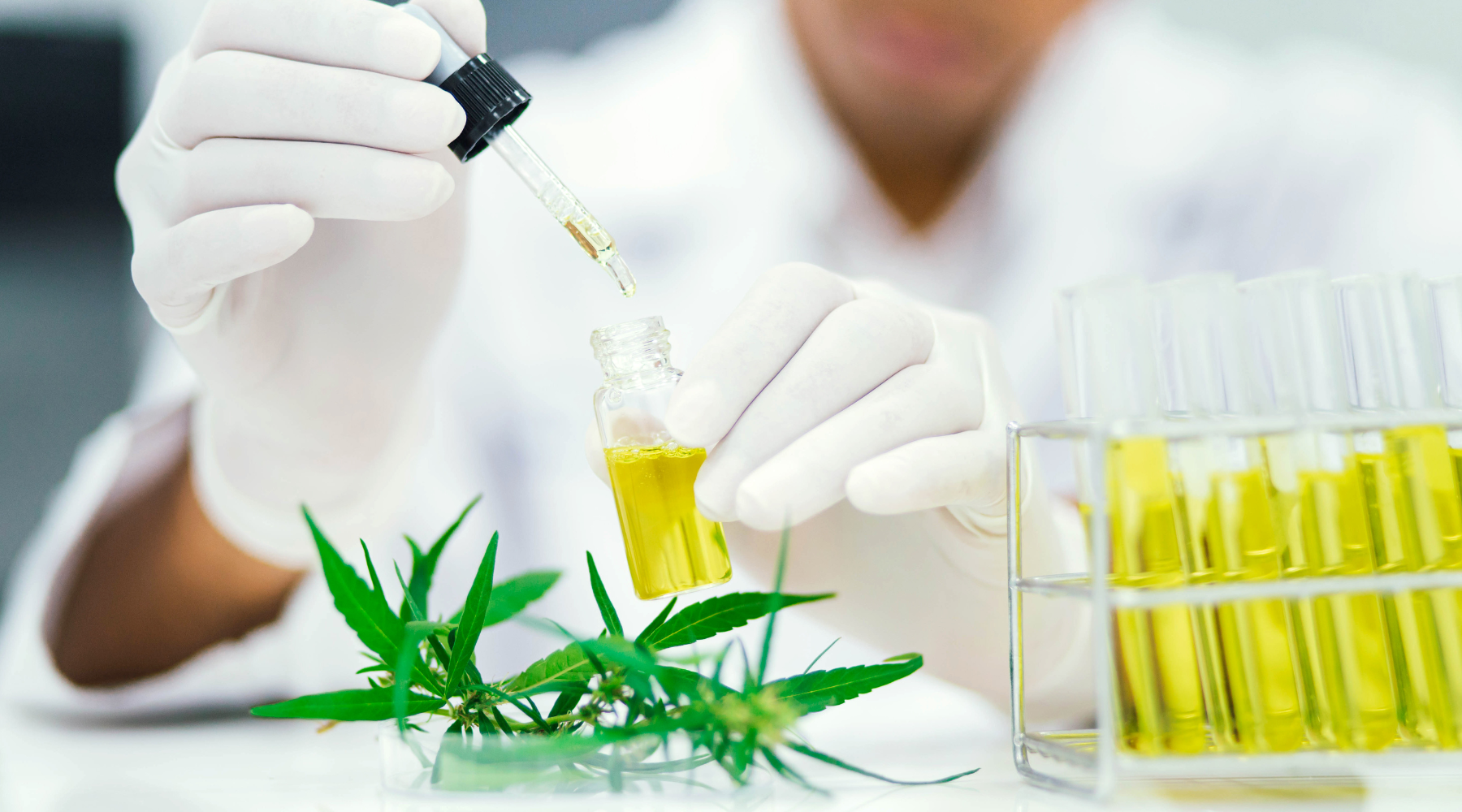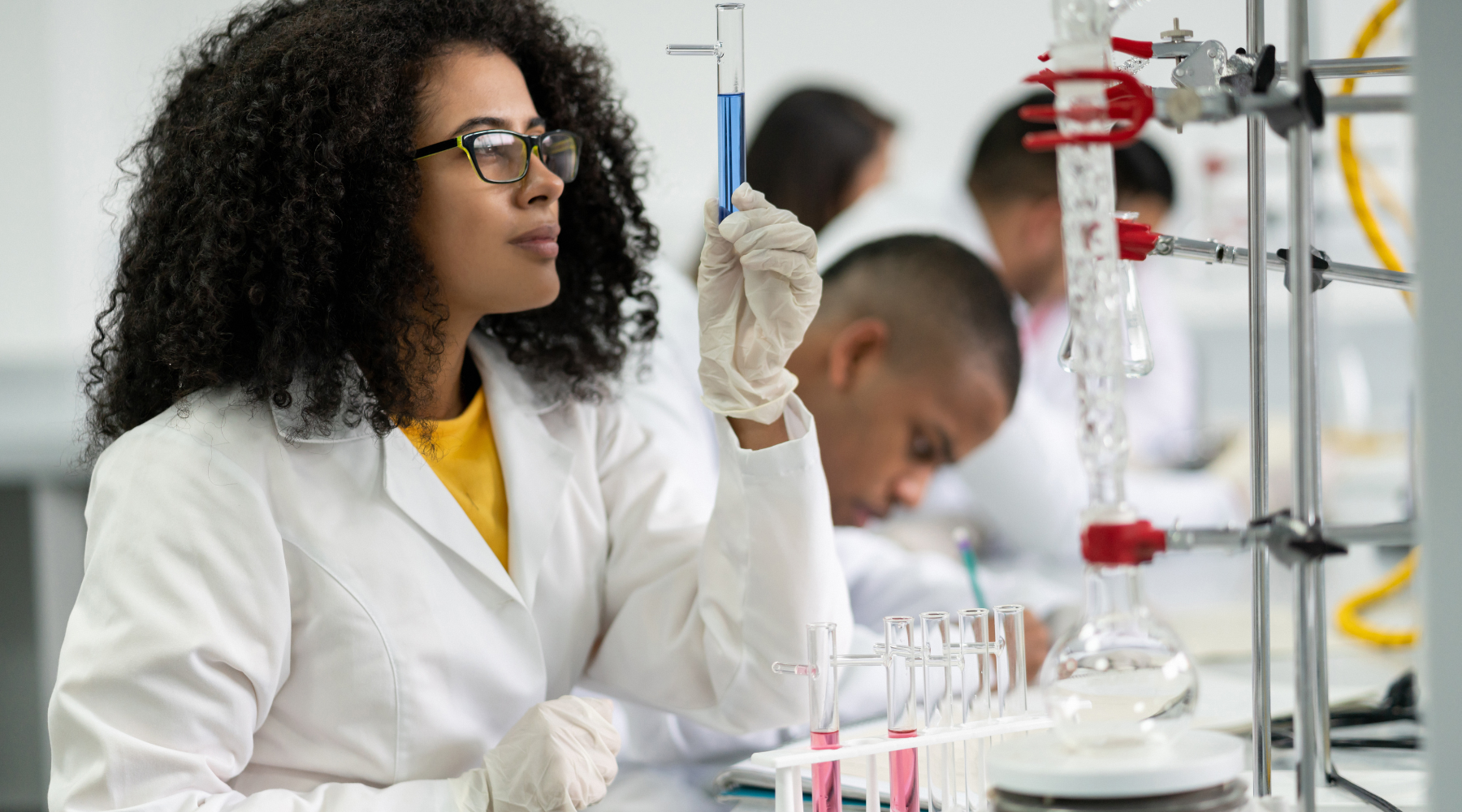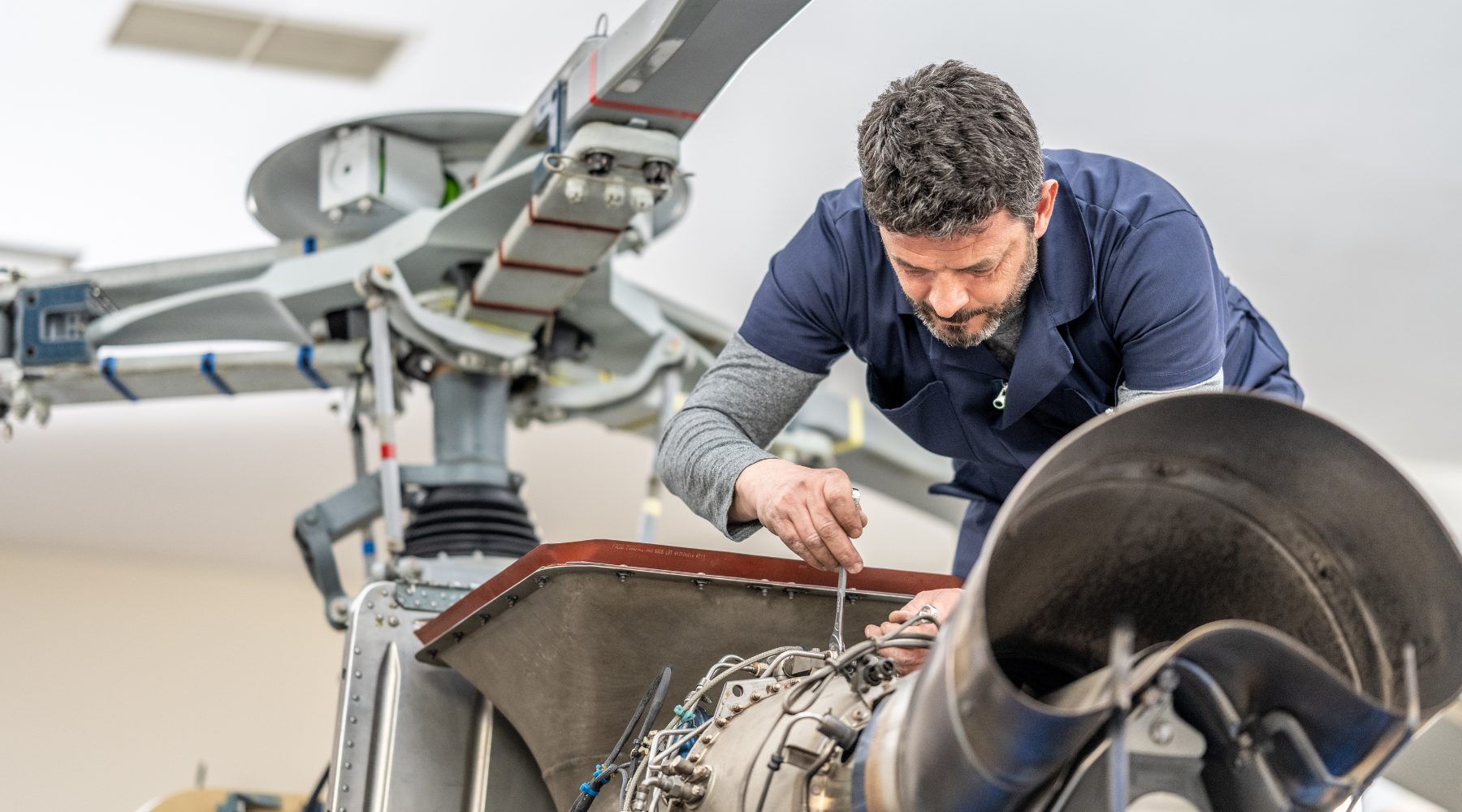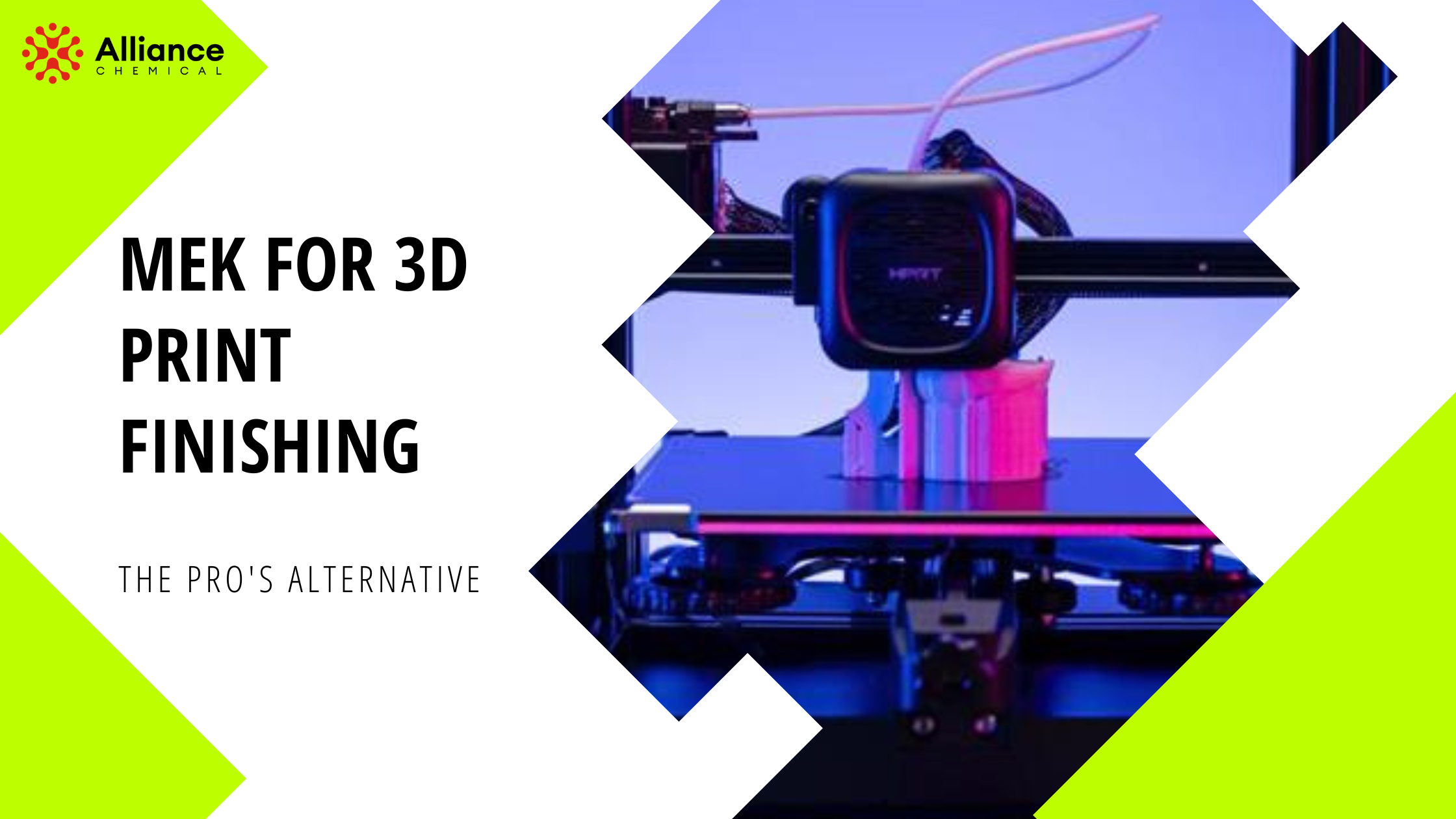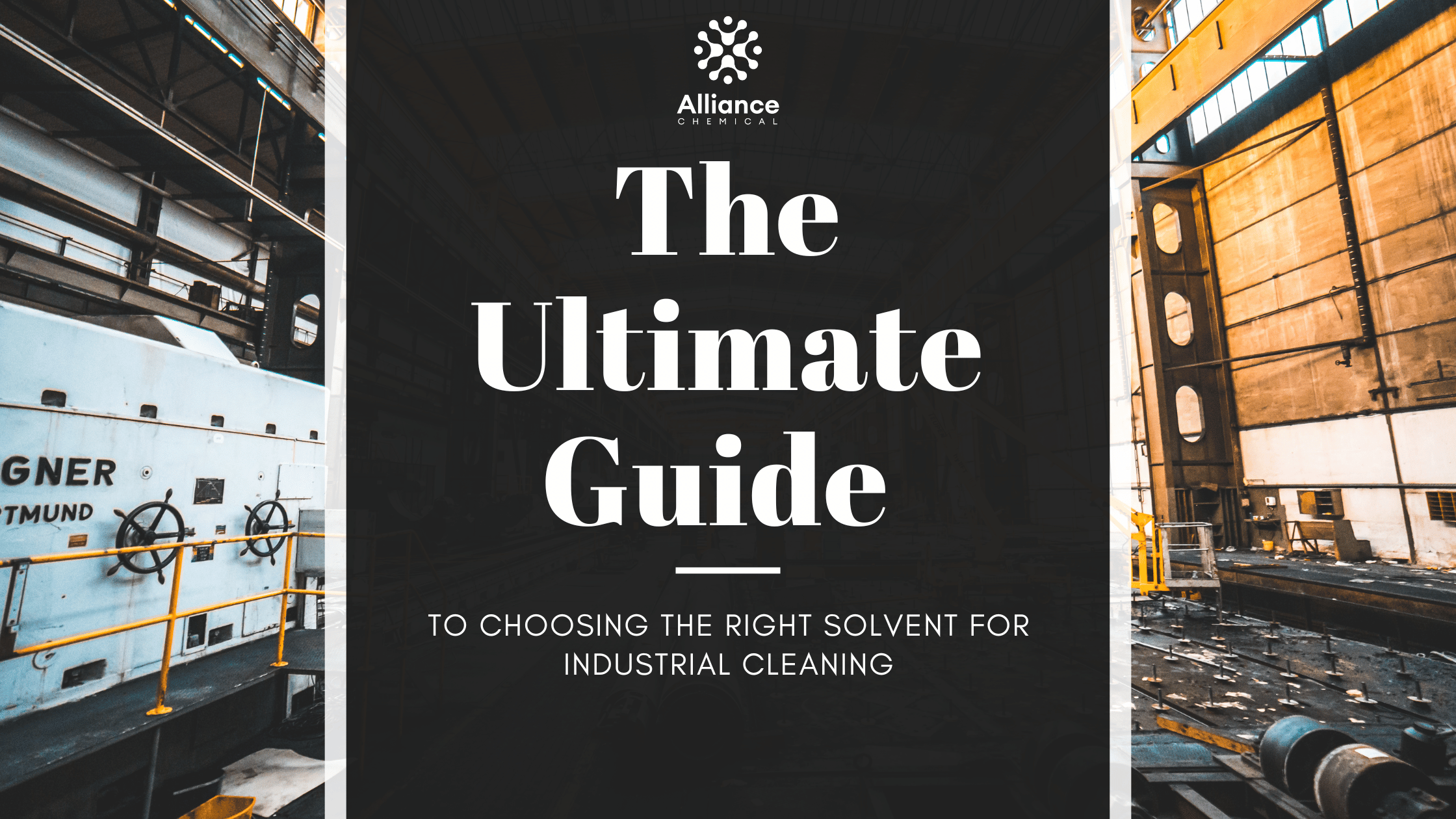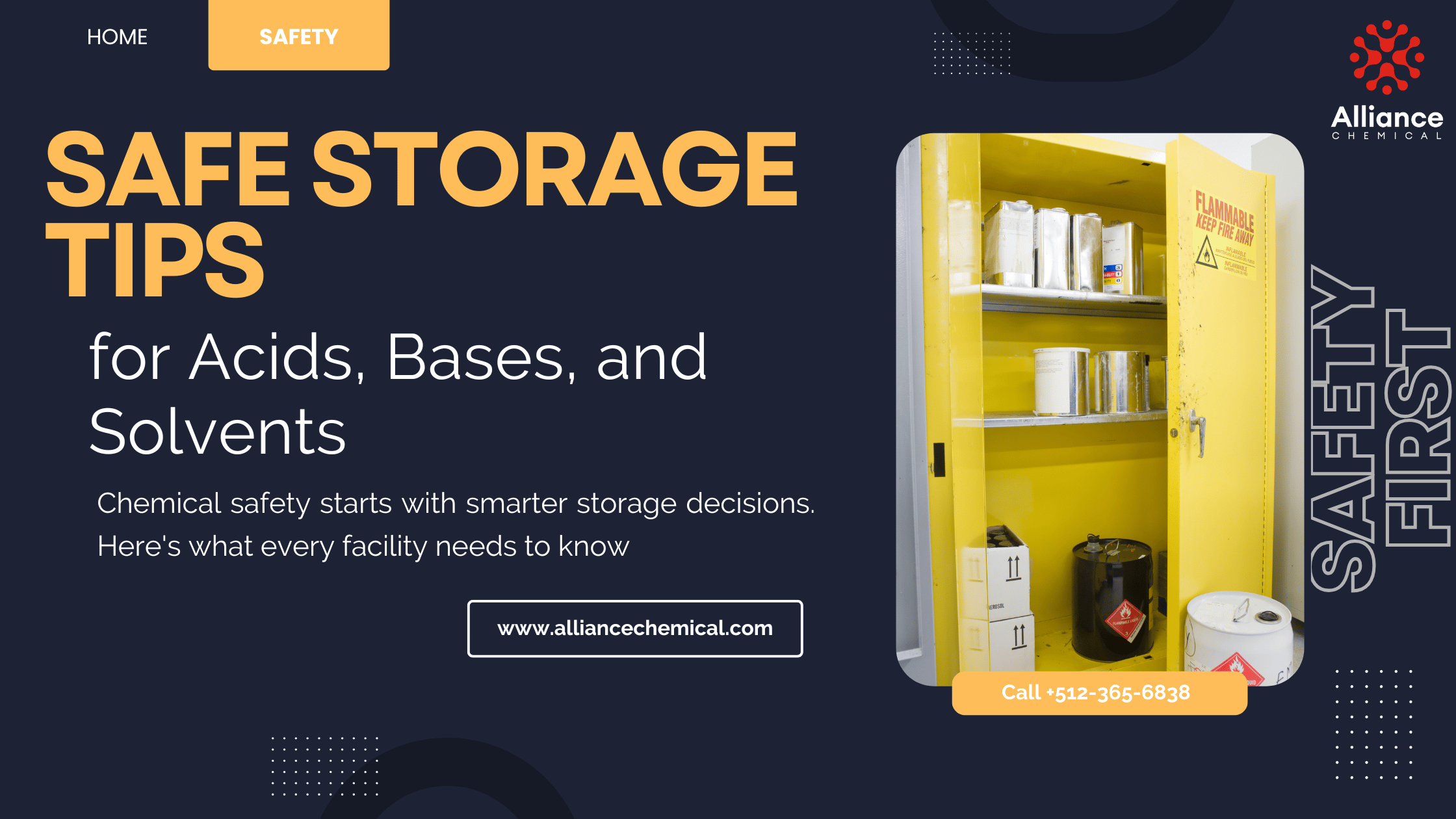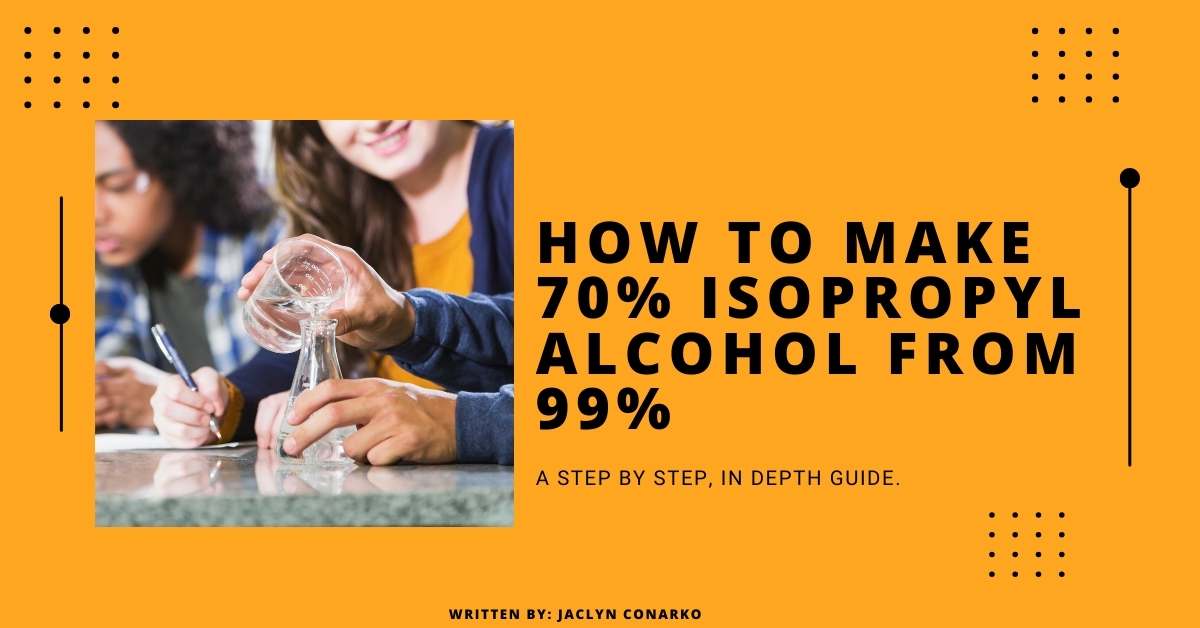
How to Make 70% Isopropyl Alcohol from 99% Isopropyl Alcohol
"Science is a way of thinking much more than it is a body of knowledge."
— Carl Sagan
1. Introduction
Modern life would look drastically different without the quiet, often-overlooked hero known as isopropyl alcohol. From disinfecting surfaces in hospitals to removing sticky labels in our homes, this chemical staple has carved out a place in the global consciousness—especially in the wake of recent health crises. Yet one question arises repeatedly: Why and how should I dilute 99% isopropyl alcohol to 70%?
If you’ve ever pondered how to get the most disinfecting power out of a bottle labeled “99% Isopropyl Alcohol” or if you’re cautious about flammability and toxicity concerns, this article is for you. In the spirit of in-depth technical guides—similar to how we tackle advanced topics like sulfuric acid in semiconductor manufacturing—we’re bringing you an equally thorough exploration of isopropyl alcohol. By the end, you’ll not only know how to perform a precise dilution, but also why it matters for healthcare, household cleaning, and broader industrial applications.
We’ll cover everything from the chemical’s historical origins to advanced calculations for achieving the exact 70% concentration, and even provide a handy calculator. We’ll also link you to relevant product lines—like our 99% Isopropyl Alcohol—so you can confidently proceed with your own experiments or professional tasks.
Key Insight:
Contrary to intuition, diluting 99% isopropyl alcohol to 70% actually increases its disinfecting prowess by slowing evaporation and improving microbial penetration.
2. The History of Isopropyl Alcohol
Isopropyl alcohol (isopropanol) may strike you as an ultra-modern chemical, but its story reflects a broader tapestry of industrial innovation and historical necessity.
2.1 Early 20th Century Innovation
Isopropyl alcohol’s commercial life began in the early 1920s, pioneered by chemists at Standard Oil (now ExxonMobil). They explored using petroleum refining byproducts for new, valuable chemicals. Through catalytic hydration of propylene (derived from fossil fuels), they synthesized the first batches of isopropanol—marking a milestone in industrial chemistry.
2.2 Prohibition and Wartime Demand
- Prohibition Era (1920–1933): With beverage alcohol restricted, isopropyl alcohol found popularity for household, medical, and even casual cleaning tasks as a “non-potable” alternative.
- World War II: Demand soared because isopropyl alcohol served as a precursor in producing acetone, essential for smokeless gunpowder and other military materials.
2.3 The Path to Everyday Use
- First widely used in hospitals for disinfection and antiseptic tasks.
- Adopted in electronics, especially for cleaning circuit boards because it evaporates quickly without leaving residue.
- Eventually became a household staple, found in first-aid kits, cosmetics, and cleaning products.
“Isopropyl alcohol’s journey—from petroleum byproduct to must-have antiseptic—reveals the dynamic interplay between scientific discovery and societal need.”
3. Understanding Isopropyl Alcohol
Before diving into the dilution process, let’s clarify what isopropyl alcohol is on a molecular level and why it’s so widely embraced across industries.
3.1 Molecular Basics: C3H8O
Isopropyl alcohol is a three-carbon alcohol with the hydroxyl group (-OH) attached to the middle carbon (making it a secondary alcohol). This structure grants it unique properties:
- Polarity: Enough to dissolve many non-polar substances while mixing well with water.
- Volatility: Evaporates at a relatively low boiling point (~82.6°C or 180.7°F for 99% purity).
- Antimicrobial Capacity: At certain concentrations, it denatures microbial proteins effectively.
3.2 Concentrations: 99% vs. 70% and More
- 99% (Anhydrous or High-Purity): Minimal water content, ideal for water-sensitive tasks, such as cleaning electronics or removing moisture from surfaces.
- 70% (Disinfectant Sweet Spot): Contains about 30% water, enabling more thorough microbial kill due to slower evaporation and enhanced protein denaturation.
- Other Concentrations: 91%, 50%, or specialized blends exist, each catering to different tasks or regulatory guidelines.
3.3 Where to Source High-Quality Isopropyl Alcohol
Not all isopropyl alcohol is created equal. Impurities can degrade performance, especially in sensitive tasks like electronics repair or medical disinfection. Look for reputable suppliers like Alliance Chemical, which offers a broad range of Alcohols—including 99% isopropyl alcohol in technical and ACS reagent grades, ensuring minimal contaminants for consistent results.
Quick Tip:
If you’re after ultra-high purity for semiconductor or lab use, also consider exploring Lab Chemicals at Alliance Chemical.
4. The Science of Dilution (& Calculator)
At first glance, diluting 99% isopropyl alcohol to 70% may sound like a downgrade, but in reality, you’re optimizing its disinfecting power. To see why, we must examine the basics of dilution and the role water plays in microbial destruction.
4.1 Understanding Dilution Theory
Dilution is about reducing solute concentration by adding more solvent. In our scenario, the solute is isopropanol, and the solvent is typically water. The tried-and-true formula for such calculations is:
C1V1 = C2V2
- C1 = Initial concentration (e.g., 99%)
- V1 = Volume of the initial solution required
- C2 = Desired concentration (e.g., 70%)
- V2 = Final total volume
By rearranging this formula, you determine exactly how much of your 99% solution (V1) you need to achieve a target volume (V2) at the desired concentration (C2).
4.2 Example Calculation for 500 mL at 70%
Let’s say you want 500 mL of 70% isopropyl alcohol from 99% stock:
V1 = (C2 × V2) / C1 = (0.70 × 500 mL) / 0.99 ≈ 353.54 mL
Hence, you need around 353.54 mL of 99% isopropyl alcohol. The rest is water:
Vwater = 500 mL - 353.54 mL ≈ 146.46 mL
70% IPA Dilution Calculator (from 99%)
Select your desired unit, enter the total final volume you want to make, and click Calculate.
4.3 Importance of High-Purity Water
Tap water can introduce minerals or impurities that leave behind residues or reduce the solution’s stability. For best results, use distilled or deionized water. If your application is highly sensitive—like cleaning lab glassware or electronics—ensuring water purity is critical. Alliance Chemical’s Water Products can be a reliable option for such tasks.
Key Insight:
Accurate measurement and pure water are non-negotiable when aiming for consistent 70% solutions—especially if you’re using them in professional or regulated contexts. Use the calculator above for quick estimates!
5. Why Dilute to 70%?
Anyone new to isopropyl alcohol might assume that a stronger concentration equals stronger disinfecting. Ironically, a near-pure solution can be less effective at killing germs than a 70% mix. Let’s break down why:
5.1 The Role of Water in Microbial Kill
Microbial cells rely on their membrane integrity for survival. When an isopropyl alcohol solution is too concentrated—such as 99%—it can rapidly coagulate proteins on the microbe’s outer membrane, effectively “sealing” the microbe instead of fully penetrating it. The microbe can thus survive. In contrast, a 70% solution includes enough water to facilitate a slower, more thorough penetration of the cell membrane, resulting in total protein coagulation inside the cell and a more complete kill.
5.2 Extended Contact Time
Pure isopropyl alcohol evaporates extremely fast. While that’s beneficial when cleaning water-sensitive objects, it leaves limited time for the disinfecting action to work. At 70%, the presence of water slows evaporation, allowing the solution to stay in contact with the microbial surface longer—a crucial factor in achieving broad-spectrum disinfection.
5.3 Safety Considerations
- Lower Flammability Risk: Although still flammable, a 70% solution is somewhat less prone to ignition compared to 99%.
- Reduced Harshness: The additional water means less irritation to the skin or certain plastics and coatings.
“Curiously, lowering the concentration of isopropyl alcohol amplifies its disinfecting might. This is a paradox only until you delve into the chemistry of how cell membranes succumb to alcohol-water mixtures.”
6. Materials & Equipment Needed
Meticulous preparation ensures accurate dilution. Below is a detailed list of what you’ll need.
6.1 Core Materials
- 99% Isopropyl Alcohol from Alliance Chemical (Technical or ACS Reagent Grade).

- Distilled or Deionized Water: Minimizes trace minerals and impurities. (Use the calculator in Section 4 to find the amount needed!)
- Measuring Cylinders / Graduated Beakers: For precise volume measurement.
- Mixing Container: Glass or chemical-resistant plastic. The container should be clearly labeled for chemical use only.
- Storage Bottles: Amber or opaque bottles recommended to protect isopropyl alcohol from light (and to avoid confusion).
- Labels & Permanent Marker: Clear identification is crucial for safety and compliance.
6.2 Additional Safety & Cleanup Items
- Protective Gloves: (Nitrile, latex, or neoprene) to shield your skin from accidental contact.
- Lab Coat or Apron: Protect clothing from chemical splashes.
- Eye Protection: Goggles or face shield for preventing accidental splashes to the eyes.
- Absorbent Pads & Spill Kit: For immediate cleanup in case of a spill.
Looking for specialized containers or PPE?
Check out Alliance Chemical’s Equipment & Containers Collection for safe chemical storage solutions, and browse our Cleaning Solutions for surface disinfection and spill response.
7. Step-by-Step Dilution Guide
Armed with materials and background knowledge, you’re ready for the actual dilution process. Let’s detail a practical approach that ensures consistency and safety. Use the calculator in Section 4 for precise amounts!
7.1 Define Your Target Volume
Choose how much 70% isopropyl alcohol you want. For instance, let’s say you need 1 liter (1000 mL) for an office environment. Enter `1000` into the calculator above.
7.2 Determine Required Volumes
Use the dilution formula C1V1 = C2V2 or, more easily, use the calculator provided in Section 4. For 1000 mL final volume:
- 99% Isopropyl Alcohol needed: ~707.07 mL
- Distilled/Deionized Water needed: ~292.93 mL
7.3 Measure & Mix
- Measure the Water First: Using a clean, dry graduated cylinder, measure the required amount of distilled water (e.g., ~292.93 mL). Pour it into your clean mixing container.
- Measure the Alcohol: Next, using a separate clean, dry graduated cylinder, carefully measure the required amount of 99% isopropyl alcohol (e.g., ~707.07 mL). Read the meniscus at eye level for accuracy.
- Combine Slowly: Gradually and slowly pour the measured 99% isopropyl alcohol into the water in the mixing container. Adding alcohol to water minimizes splashing and potential heat generation.
- Gently Stir or Swirl: Use a clean glass rod or gently swirl the container to ensure the solution is thoroughly mixed. Avoid vigorous shaking which can introduce air or increase fumes.
7.4 Transfer & Label
- Choose Storage: Carefully transfer the final 70% solution into an appropriate, clean storage bottle (amber glass or HDPE plastic is recommended). Use a funnel if necessary.
- Label Clearly: Immediately label the bottle: "70% Isopropyl Alcohol - Diluted on [Date]". Include any necessary hazard warnings (e.g., "Flammable").
- Record Keeping (Optional): For professional settings, log the dilution details (date, batch source of 99% IPA, final volume) in a lab notebook or record system.
Crucial Mixing Tip:
Always add the more concentrated liquid (99% IPA) slowly to the less concentrated one (water). This is a standard safety practice in chemistry to control potential reactions or heat release.
8. Safety Precautions
Though isopropyl alcohol is widely considered safer than many industrial chemicals, it’s flammable and can pose health risks if mishandled. Below is a thorough overview of best practices.
8.1 Personal Protective Equipment (PPE)
- Gloves: Use appropriate chemical-resistant gloves (Nitrile or neoprene are common choices for IPA) to avoid skin contact.
- Eye Protection: Wear safety goggles or a face shield to protect eyes from accidental splashes during measuring and mixing.
- Protective Clothing: A lab coat or chemical-resistant apron is recommended, especially when handling larger quantities.
8.2 Ventilation & Fire Control
- Work in a Well-Ventilated Area: Perform dilutions in an area with good airflow or under a fume hood to prevent buildup of potentially irritating or flammable vapors.
- Eliminate Ignition Sources: Isopropyl alcohol vapors are highly flammable. Ensure there are no open flames, sparks (from electrical equipment), static discharge sources, or lit smoking materials nearby.
- Fire Extinguisher Access: Know the location of and how to use an appropriate fire extinguisher (Type B: flammable liquids - typically CO2 or dry chemical).
8.3 Handling Spills & Accidents
- Small Spills: Immediately wipe up with absorbent materials (paper towels, spill pads). Ensure good ventilation during cleanup. Dispose of contaminated materials according to local regulations.
- Large Spills: Evacuate non-essential personnel. Contain the spill if possible without risk. Increase ventilation. Follow your facility’s established hazardous material spill response protocol.
-
First Aid:
- Skin Contact: Wash affected area thoroughly with soap and water. Remove contaminated clothing.
- Eye Contact: Immediately flush eyes with plenty of water for at least 15 minutes, holding eyelids open. Seek medical attention.
- Inhalation: Move person to fresh air. If breathing is difficult, administer oxygen (if trained) and seek medical attention.
- Ingestion: Do NOT induce vomiting. Rinse mouth with water. Seek immediate medical attention.
Critical Safety Reminder
Isopropyl alcohol, even diluted to 70%, is FLAMMABLE. Vapors can travel to ignition sources. Handle with care, ensure proper ventilation, and store safely away from heat and flames.
9. Applications of 70% Isopropyl Alcohol
A 70% isopropyl alcohol solution is a workhorse across multiple sectors—from domestic cleaning to aerospace. Let’s explore its most impactful uses.
9.1 Healthcare & Medical Settings
- Surface Disinfection: Widely used in hospitals and clinics to disinfect non-critical surfaces like countertops, bed rails, medical equipment exteriors, and stethoscopes.
- Skin Antisepsis: Commonly used to cleanse the skin before injections or minor procedures. Note: Repeated use can cause skin dryness.
- Instrument Disinfection (Soaking): Suitable for soaking some non-critical instruments, but always check manufacturer compatibility.
9.2 Household & Consumer Uses
- General Cleaning & Disinfecting: Effective for high-touch surfaces like doorknobs, light switches, phones, keyboards, remote controls, countertops, and bathroom fixtures.
- Electronics Cleaning: Safely cleans screens (check manufacturer guidance first!), keyboards, mice, and other electronic casings. The water content helps dissolve grime, while the alcohol ensures relatively quick evaporation.
- Sticky Residue Removal: Helps dissolve adhesive residues from labels and tape.
- Glass Cleaning: Can leave a streak-free shine on mirrors and windows.
9.3 Industrial & Manufacturing Environments
- Surface Preparation: Cleans surfaces before painting, coating, or applying adhesives by removing oils and contaminants.
- General Degreasing: Effective for light degreasing tasks on machinery or parts.
- Lab Bench Disinfection: Standard practice for maintaining a clean laboratory workspace.
- Cleaning Lab Glassware: Useful for rinsing and preliminary cleaning.
9.4 Specialized Fields
- 3D Printing: Used to clean resin prints (SLA/DLP) after printing.
- Aerospace & Avionics: Precision cleaning of components where controlled evaporation and low residue are important.
- Cosmetics: Used as a solvent and antiseptic in some formulations.
Need a variety of cleaning or disinfecting agents?
From IPA to specialized solvents and surfactants, check out Alliance Chemical’s Disinfectants & Cleaning Collection or explore our Industrial Category for bulk needs.
10. Storing Your Solution
Proper storage extends the shelf life of your 70% isopropyl alcohol and, more importantly, maintains safety. Isopropanol is volatile and flammable.
10.1 Containers & Materials
- Suitable Containers: Use clean bottles made of High-Density Polyethylene (HDPE), Polypropylene (PP), or glass. Ensure the cap provides a tight seal to prevent evaporation.
- Avoid Incompatible Materials: Do not store in containers made of materials that IPA can degrade, such as certain types of rubber or plastics (like PET or polystyrene).
- Original Containers: If possible, storing in the original manufacturer's container (if appropriately sized and labeled for 70%) is often best.
- Opaque or Amber Bottles: Recommended, especially for long-term storage, to minimize potential degradation from light exposure, although IPA is relatively stable to light.
10.2 Environmental Factors
- Cool Location: Store in a cool, dry place, away from direct sunlight and sources of heat (like radiators, furnaces, water heaters). Ideal temperature is typically below 25°C (77°F).
- Ventilation: Store in a well-ventilated area. Avoid confined, unventilated spaces where fumes could accumulate.
- Away from Ignition Sources: Absolutely critical. Keep well away from open flames, sparks, pilot lights, electric motors, static electricity sources, and hot surfaces.
- Segregation: Store separately from incompatible chemicals, especially strong oxidizers (like bleach, hydrogen peroxide, nitrates).
10.3 Labeling & Shelf Life
- Clear Labeling: Ensure the container is clearly labeled "70% Isopropyl Alcohol" with the date of dilution and appropriate hazard warnings (e.g., "Flammable Liquid").
- Shelf Life: Properly stored in a tightly sealed container, 70% IPA is generally stable for several years (typically 2-3 years). However, gradual evaporation, especially with frequent opening or poor sealing, can alter the concentration over time. Check for any cloudiness or change in appearance before use if stored for a very long time.
11. Frequently Asked Questions
- Q1: Is 70% always better for disinfection than 99%?
- Answer: For killing most bacteria, viruses, and fungi on surfaces, 70% is generally considered more effective. The water content helps the alcohol penetrate cell walls and denature proteins more thoroughly, and it slows evaporation, increasing contact time. 99% IPA evaporates too quickly for optimal disinfection and may just dehydrate microbes without killing them. However, 99% is preferred for tasks requiring rapid evaporation and minimal water residue, like cleaning electronics internals or dehydrating samples.
- Q2: Can I use tap water instead of distilled/deionized water for dilution?
- Answer: While technically possible for non-critical applications (like basic household cleaning), it's strongly recommended to use distilled or deionized water. Tap water contains minerals, salts, and potentially microbes or chlorine, which can leave residue, interfere with cleaning/disinfection, or slightly alter the solution's properties. For lab, medical, or electronics use, high-purity water is essential. Find options in Alliance Chemical’s Water Products.
- Q3: How accurate do my measurements need to be?
- Answer: For general disinfection, slight variations (e.g., 68-72%) are usually acceptable. However, strive for accuracy using proper measuring tools (graduated cylinders are best). Gross inaccuracies could significantly reduce effectiveness or increase flammability risk (if too concentrated). For scientific or regulated applications, precision is crucial.
- Q4: What happens if my 70% solution evaporates over time?
- Answer: Because alcohol evaporates faster than water, a solution left open or poorly sealed will gradually become *less* concentrated (e.g., dropping towards 65%, 60%, etc.), reducing its disinfectant efficacy. This is why tight sealing and noting the dilution date are important.
- Q5: Can I reuse the 70% IPA solution (e.g., after cleaning something)?
- Answer: Generally, no, especially for disinfection. Once used for cleaning, the solution becomes contaminated with dirt, oils, and microbes, rendering it ineffective and potentially spreading contamination. Always use fresh solution for critical tasks. For some non-critical cleaning (like rinsing parts), reuse might be considered, but effectiveness will decrease.
- Q6: Is rubbing alcohol the same as 70% isopropyl alcohol?
- Answer: Often, yes. "Rubbing alcohol" sold commercially in the US is typically a solution of 70% isopropyl alcohol in water. However, some formulations might use ethanol instead, or contain additives like denaturants or fragrances. Always check the label for the active ingredient and concentration.
12. Case Studies & Real-World Examples
Though isopropyl alcohol might seem ubiquitous, let’s examine two scenarios where the correct concentration (70%) made a tangible difference.
12.1 Case Study: Microbiology Lab Contamination Control
- Challenge: A university research lab experienced intermittent bacterial contamination on their cell culture plates, despite cleaning protocols using 99% IPA for workbench surfaces.
- Investigation: Swab tests confirmed survival of common lab bacteria on surfaces wiped with 99% IPA due to rapid evaporation limiting contact time.
- Solution: The lab switched its standard surface disinfectant protocol to using freshly prepared 70% IPA (diluted with sterile deionized water) and mandated a 1-minute wet contact time before surfaces were considered disinfected.
- Result: A significant reduction (over 90%) in workbench contamination events was observed within a month, improving the reliability of their cell culture experiments.
12.2 Case Study: Electronics Assembly Cleanliness
- Challenge: An electronics manufacturer was using 99% IPA to clean flux residues from Printed Circuit Boards (PCBs) after soldering, but operators reported needing multiple passes, and occasional white residue remained.
- Analysis: The rapid evaporation of 99% IPA didn't allow sufficient time to fully dissolve some stubborn flux types before drying. The white residue was undissolved flux components.
- Trial: A trial using 70% IPA was conducted. While evaporation was slower, the increased solvency time allowed the 70% solution to more effectively dissolve the flux in a single pass for most components.
- Outcome: The manufacturer adopted 70% IPA for specific post-solder cleaning steps where flux dissolution was key, reserving 99% IPA for final water displacement or cleaning highly sensitive components. This improved cleaning efficiency and reduced rework.
“These examples highlight that choosing the *right* concentration for the specific task—often 70% for disinfection and sometimes for cleaning—is more critical than simply using the highest available purity.”
13. Conclusion
From its industrial origins to its indispensable role in modern hygiene and technology, isopropyl alcohol remains a vital chemical tool. Understanding the science behind its dilutions, particularly the surprising effectiveness of the 70% concentration for disinfection, empowers users to harness its properties safely and efficiently.
By recognizing that water is not just a diluent but an active participant in the microbial kill process—facilitating cell penetration and extending contact time—we move beyond the misconception that "higher concentration is always better." Whether you are ensuring sterility in a healthcare setting, maintaining cleanliness in a lab, cleaning electronics, or simply keeping your home hygienic, knowing how and why to achieve a precise 70% solution is key.
This guide, complete with explanations, step-by-step instructions, safety protocols, and a handy calculator, aims to equip you with that knowledge. Remember the core principles:
- Purpose Dictates Concentration: Use 70% for broad disinfection; consider 99% for rapid drying/water displacement.
- Quality Inputs Matter: Start with reliable 99% Isopropyl Alcohol and use high-purity water for critical dilutions.
- Accuracy & Safety First: Measure carefully, mix correctly (alcohol into water), use appropriate PPE, ensure ventilation, and store safely.
Take the Next Step with Alliance Chemical
Ready to apply this knowledge? Secure your supply of high-quality 99% Isopropyl Alcohol or explore our pre-mixed 70% IPA solutions. Browse our full Alcohols Collection or contact our expert team for bulk orders or specialized requirements. Let us be your partner in chemical solutions.
14. References & Further Reading
- McDonnell, G., & Russell, A. D. (1999). Antiseptics and Disinfectants: Activity, Action, and Resistance. Clinical Microbiology Reviews, 12(1), 147–179. (Link)
- Centers for Disease Control and Prevention (CDC). (2019). Guideline for Disinfection and Sterilization in Healthcare Facilities (2008). (Link)
- Rutala, W. A., & Weber, D. J. (2019). Best practices for disinfection of noncritical environmental surfaces and equipment in health care facilities: A bundle approach. American Journal of Infection Control, 47, A96–A105.
- Boyce, J. M., & Pittet, D. (2002). Guideline for Hand Hygiene in Health-Care Settings: Recommendations of the Healthcare Infection Control Practices Advisory Committee and the HICPAC/SHEA/APIC/IDSA Hand Hygiene Task Force. MMWR Recommendations and Reports, 51(RR-16), 1–45. (Link)
- Alliance Chemical. (n.d.). Isopropyl Alcohol 99% Technical Grade.
- Alliance Chemical. (n.d.). Safety Data Sheet (SDS) - Isopropyl Alcohol (All Grades).
- Alliance Chemical. (n.d.). Lab Chemicals Collection.
- Alliance Chemical. (n.d.). Equipment & Containers Collection.
Disclaimer: The information provided in this guide and calculator is for general educational and informational purposes only. It is not a substitute for professional advice, manufacturer's instructions, or specific safety protocols required for your application or jurisdiction. Working with chemicals, including isopropyl alcohol, involves inherent risks such as flammability and potential health effects. Always consult the Safety Data Sheet (SDS) for the specific product you are using, wear appropriate Personal Protective Equipment (PPE), ensure adequate ventilation, and follow all applicable safety regulations and best practices. Alliance Chemical assumes no liability for any damages or injuries resulting from the use or misuse of the information or calculator provided herein. Use at your own risk.
